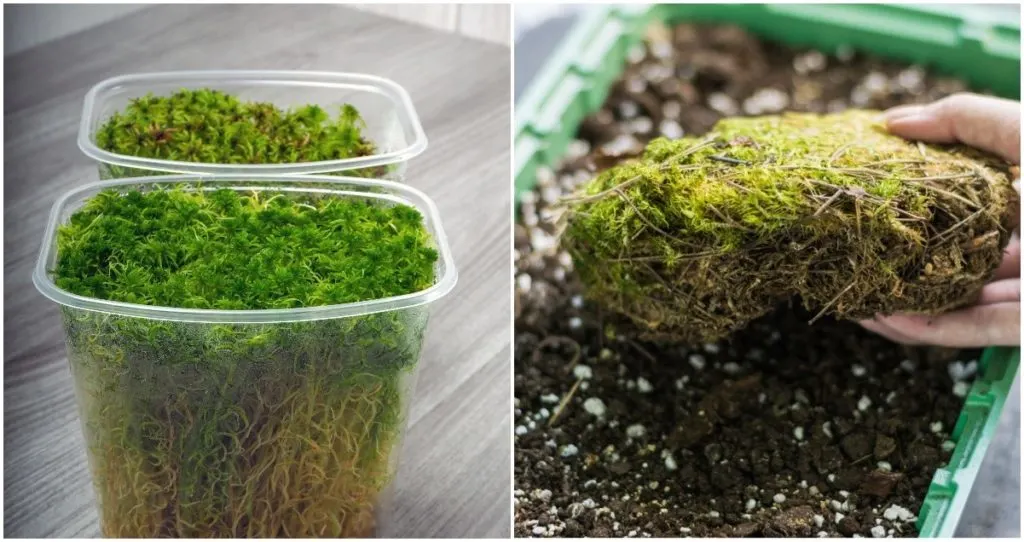
Sphagnum mosses are an utterly unique and fascinating genus of bog-dwelling plants.
Perhaps you’re most familiar with them in their dried form. The light brown, fibrous, stringy bits are widely used in horticulture to improve drainage and conserve moisture.
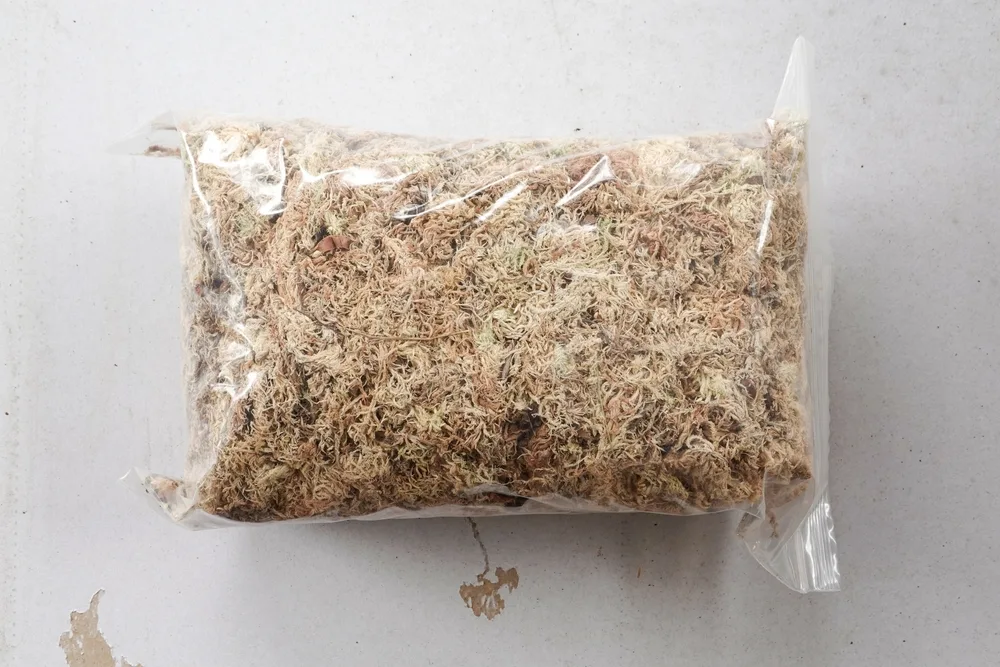
Living or dead, sphagnum moss has the incredible ability to hold 16 to 26 times its dry weight in water.
But purchasing dried or milled sphagnum moss by the bag isn’t exactly sustainable since it’s often a by-product of peatlands mining. Peat bogs take thousands of years to develop and these fragile habitats are more important than ever for mitigating climate change.
There’s really no need to tear up peat bogs in order to enjoy the benefits of sphagnum moss.
It is a plant after all. Strike the right balance of light, water, and humidity, and you’ll have gobs of ethically-sourced sphagnum moss in no time.
Related Reading: 4 Reasons To Stop Using Peat Moss & 7 Sustainable Alternatives
About Sphagnum Moss…
Alongside liverworts, hornworts, and other mosses, Sphagnums are non-vascular plants – known as bryophytes. These types of plants do not grow roots, bear flowers, or form seeds.
Without the xylem that conducts water and nutrients from root to stem to leaves like it would in typical land plants, sphagnum mosses possess simpler tissue structures, called phyllids, that look like leaves.
Porous, thin, and usually only one cell thick, the leaf-like tissues absorb and hold water like a sponge. Zoomed in under a microscope, and their leaves, branches, and stems look like delicate, intricately woven nets.
Amazingly, sphagnum moss can be wrung out and re-wetted again and again without losing its vigor.
There are around 380 recognized species of Sphagnum, mainly found in cool and moist places in the Northern Hemisphere. They are often the dominant species in open bogs, marshes, fens, and moors but can also inhabit forested areas, creeping ever outward like a lush carpet.
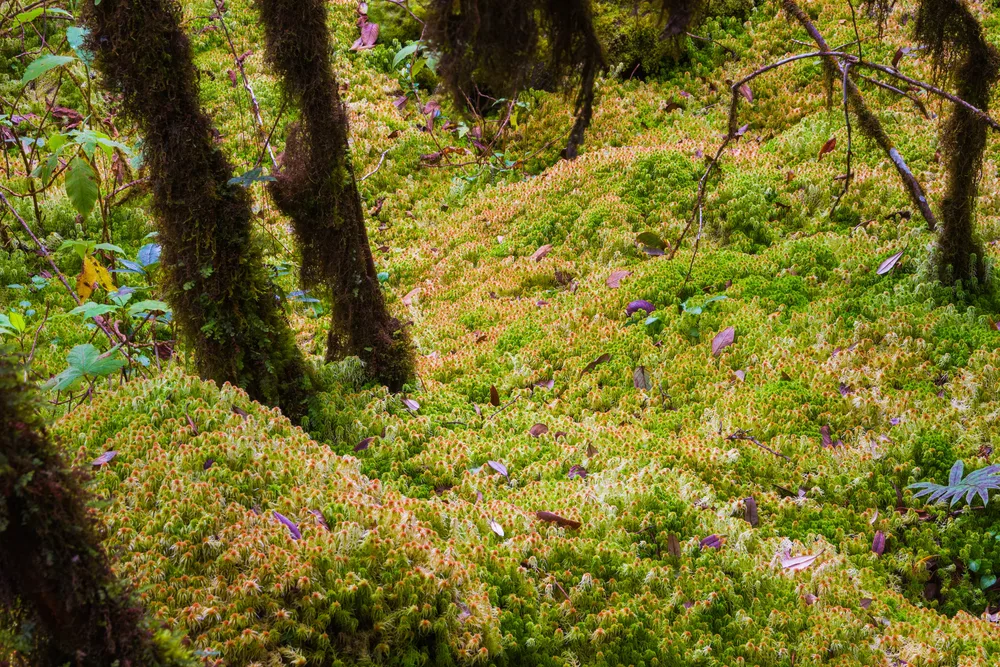
Look at sphagnum mosses closely and they are quite beautiful, with species ranging in vibrant colors from light greens to yellows, oranges, pinks, reds, and browns. The foliage is soft, full, and dense, with erect terminal heads that resemble a starry shape.
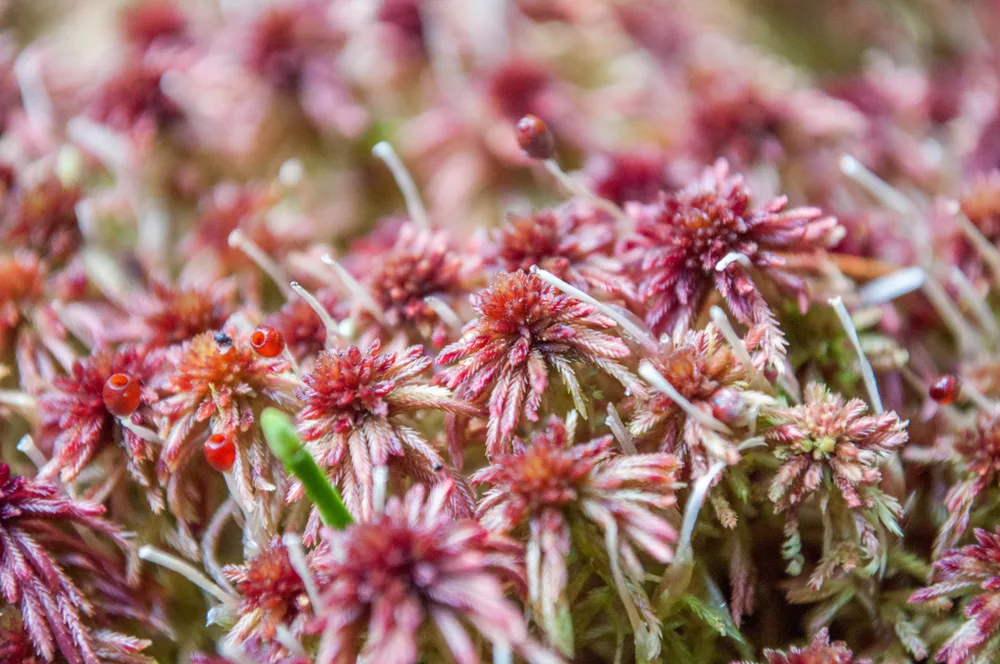
Sphagnums are considered to be the most important non-vascular plants on earth. As a pioneer species, they can grow and thrive in places where terrestrial plants cannot.
They shape each environment they reside in, directly influencing pH, nutrients, and water levels wherever they spread. Once Sphagnums are established, other vascular land plants can set down roots to grow.
Sphagnum Moss Lifecycle
Instead of flowers and seeds, sphagnum mosses reproduce sexually via male and female organs that may be monoecious (on the same plant) or dioecious (on different plants), depending on the species.
The male bits sprout from the base of leaves, are spherical and spiky in appearance, and differentiate themselves from the rest of the foliage by changing colors to red, yellow, or brown. These will release thousands of sperm into the water that will swim until they locate an egg to fertilize.
The female organs develop along short side branches, and have a bulbous base that each contains a single egg. Thanks to chemical attraction, sperm can easily locate these eggs. Just one sperm is needed to fertilize an egg, where a zygote will form.
As the zygotes mature, they arise above the foliage in a dark and orb-shaped capsule that contains microscopic spores. In dry conditions, pressure builds up inside the capsule until it pops open, releasing the spores to be carried away in the wind. Wherever the spores land, a new plant will grow.
Sphagnum mosses will also self-propagate vegetatively by sprouting a new stem from the main branch. Eventually the stem will separate from the branch and form a new plant that is an identical clone of the parent specimen.
Popular Sphagnum Varieties
Prairie Sphagnum (Sphagnum palustre)
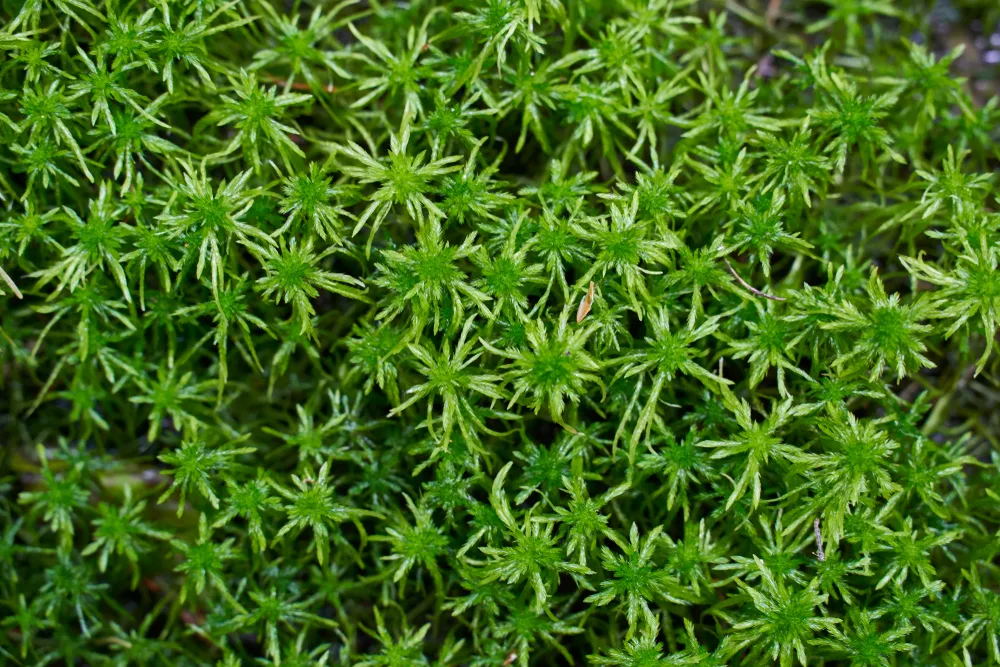
A robust and easygoing species, Prairie Sphagnum (also known as blunt-leaved bogmoss) is found in all continents except Antarctica, often favoring woody swamps and marshy meadows.
It grows in rounded mounds in colors that range from greens to golds and browns with a pink tinge. Leaves are long and tapered and have a curved, convex surface that makes the foliage appear triangular.
Red Bogmoss (Sphagnum capillifolium)
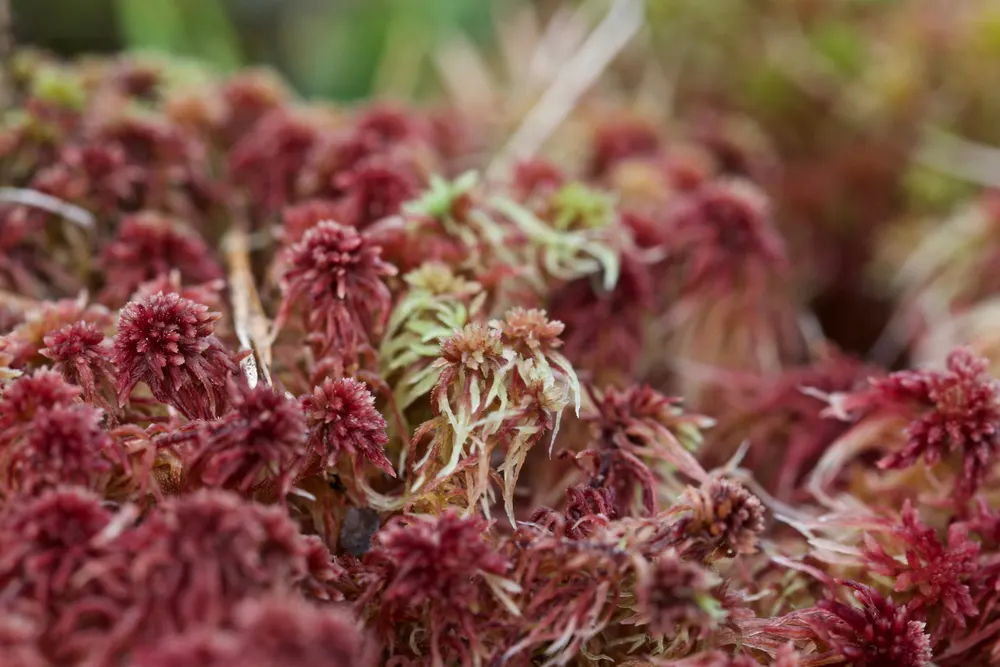
Red Bogmoss is a stunning and compact Sphagnum, forming dense carpets in boreal forests and bogs. It’s native to Canada, the northern US, Greenland, and parts of Europe.
When exposed to plenty of sunlight, Red Bogmoss turns vivid shades of red. In shaded areas, the foliage will remain green.
A low-grower, the foliage arises on 1-inch stems but spreads outward as much as five feet.
Fine Bogmoss (Sphagnum angustifolium)
A small and slender type with narrow leaves spiraling around the heads, like tiny pom-poms, Fine Bogmoss occupies a wide range of habitats in temperate to arctic zones.
Foliage colors start out green and turn various hues of pale yellow, mustard, and golden brown depending on light levels. The brown stems will have pink patches unless the plant is in shade.
Where to Buy Live Sphagnum Moss?
You’re not likely to find living sphagnum moss at the garden store, but a few specialty retailers and hobbyists sell and ship live cultures online:
These are typically sold by the cup or zip lock bag. You’ll only need a small sample to seed a whole new colony.
Sphagnum Moss Growing Conditions:
To successfully cultivate sphagnum moss, disregard almost everything you know about raising land plants. Sphagnums operate on a whole other level, where humidity and moisture are the most important elements for its survival.
Hardiness
Sphagnum mosses are winter hardy in zones 3 to 9.
Light Requirements
Full sun to part shade.
Plants given less light will stay luxuriantly green, while lots of bright light will bring out Sphagnum’s spectacular array of colors.
Soil
Sphagnum moss is a non-vascular plant without a root system, so planting it on top of soil or other substrates isn’t at all necessary. The plants take in water and nutrients through direct contact with their leaves.
In the wild, they grow over wet, acidic rocks and fallen trees, at the edges of low-lying hummocks in swamps and bogs, and floating in mats along the surface of the water.
Watering
Sphagnums love water and should always be moist to the touch.
Mist plants to maintain moisture levels and occasionally drench them with no more than an inch of water. White or brown tips signals that sphagnum moss is beginning to dry out.
One thing that Sphagnum can’t much abide is hard or alkaline water. Give plants rain water, distilled water, or reverse osmosis water if your tap water isn’t up to snuff.
Humidity
Along with its moisture needs, sphagnum moss thrives in sites with high humidity – between 40% and 80%.
Temperature
Sphagnum moss becomes dormant in cold temperatures but will spring back to life when things warm up. The fastest growth rates will occur in 55°F to 80°F (12°C to 26°C).
Fertilizer
Adapted to harsh environments with little fertility, sphagnum moss doesn’t need any supplemental nutrients. Applying fertilizers can do more harm than good and turn the moss into slimy mush.
How to Grow Sphagnum Moss
Indoor culture
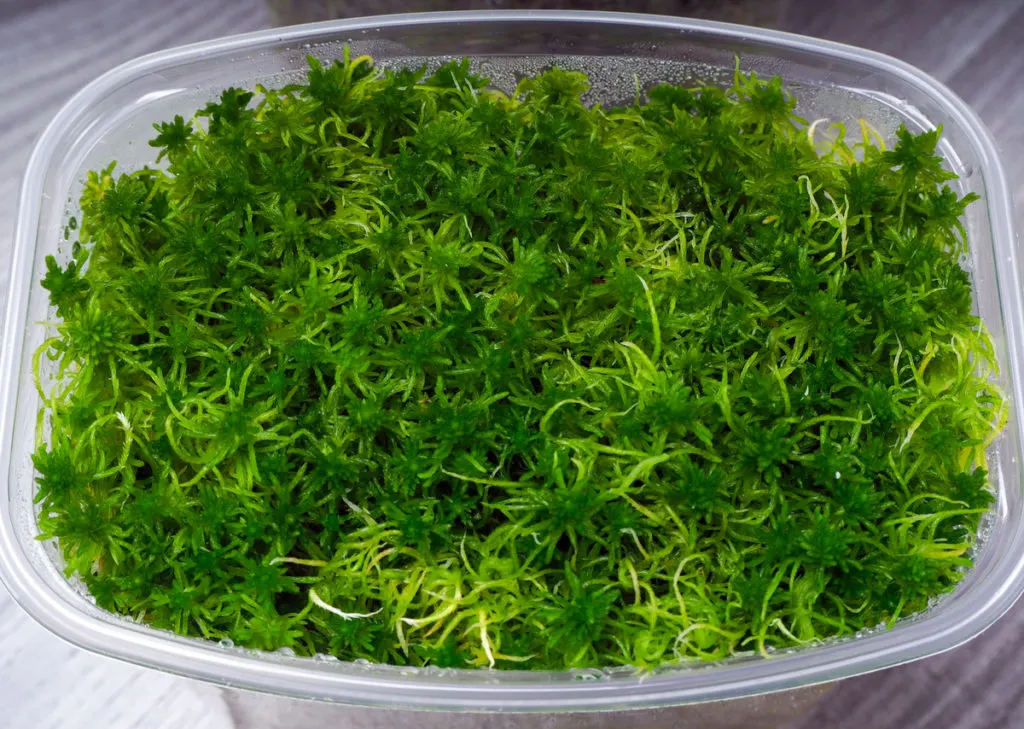
It’s much easier to manage moisture, humidity, and light levels when growing sphagnum moss in a controlled indoor environment.
To start your grow, you’ll need a couple of stackable garden trays – one with drainage holes and one without. With the drainage tray nestled on top, line the bottom with landscape fabric or shade cloth.
This simple setup works really well since it replicates the conditions of a swamp. Water is able to drain through the fabric into the lower tray. As the water collects in the bottom, humidity levels will rise.
To keep moisture and humidity high, use an enclosed space as a growing site. This could be anything with clear sides and a lid – terrariums, cold frames, humidity domes, aquariums, or inside a greenhouse.
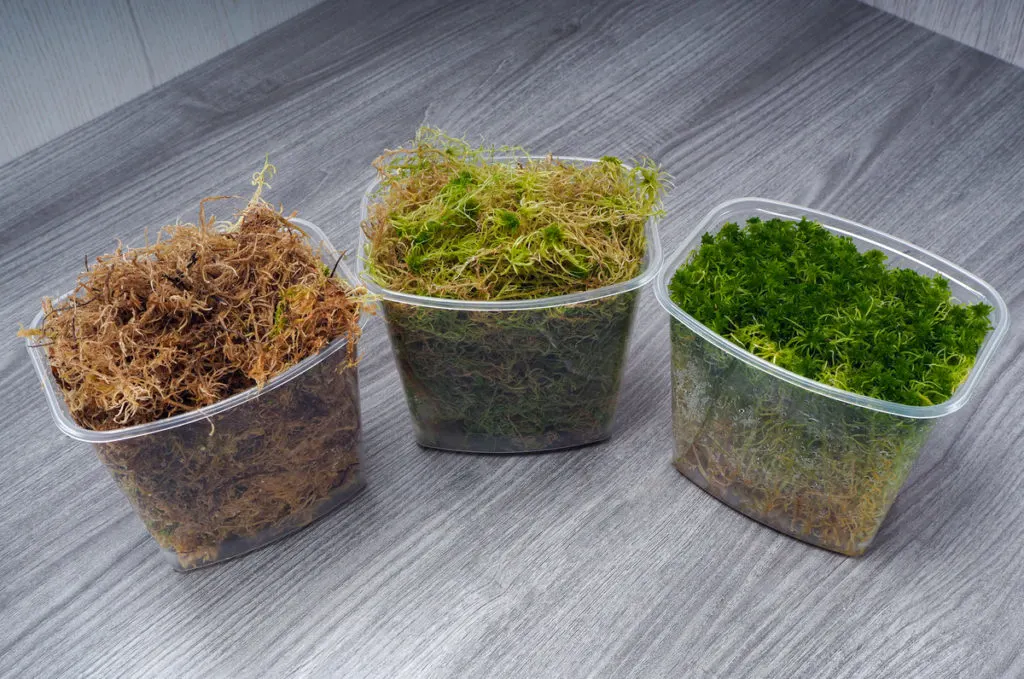
If you received your sphagnum moss in the mail, it tends to come in a tangled clump of strands. Snip them into smaller pieces – between 1 to 4 inches long – and lay them evenly over the cloth.
Spray the entire area with clean water, until the cloth is consistently moist.
Place the tray inside your propagator. If it has a lid, open it up for a few minutes every day to let fresh air inside.
Make sure your sphagnum moss is set up in a place with plenty of bright indirect light. You can use grow lamps to supplement light levels during the shorter days of winter.
Outdoor culture
Naturally wet areas of the yard would be an excellent site for growing sphagnum moss outside. Next to a pond or other water feature is ideal, or you can create a bog garden from scratch.
Choose a location in part shade when growing Sphagnum outside. The cooler sunlight of the morning is best as these water-lovers tend to struggle with hot afternoon sun exposures.
To mimic the conditions of sphagnum moss’ boggy habitat, dig a basin into the ground. Making a small hollow for the plants will help retain moisture.
Dig down about two feet deep and as wide as needed for the amount of moss you have to seed. Fill the hole with compost but leave at least 6 inches of space unfilled below the edge of the crater.
Lightly tamp down the compost with your hands. Water the site until it’s evenly moist.
Cut up the sphagnum moss into smaller bits and scatter over the surface of the basin.
Check on your fledgling Sphagnum every day at first. You’ll want to make sure they are keeping moist in their new home. Mist plants when they need topping up.
How to Harvest Sphagnum Moss
When sphagnum moss is kept warm and moist, it will fill in in around 2 to 3 months.
As sphagnum moss builds its colony, it will send out longer strands. These can be anywhere from 1 to 12 inches in length, depending on the species.
Snip these runners off. Using curved scissors with a fine tip will make this task easier. Collect all your cuttings on a plate.
Set them aside for harvest or sprinkle them over the growing surface to continue seeding your colony.
7 Ways to Use Sphagnum Moss
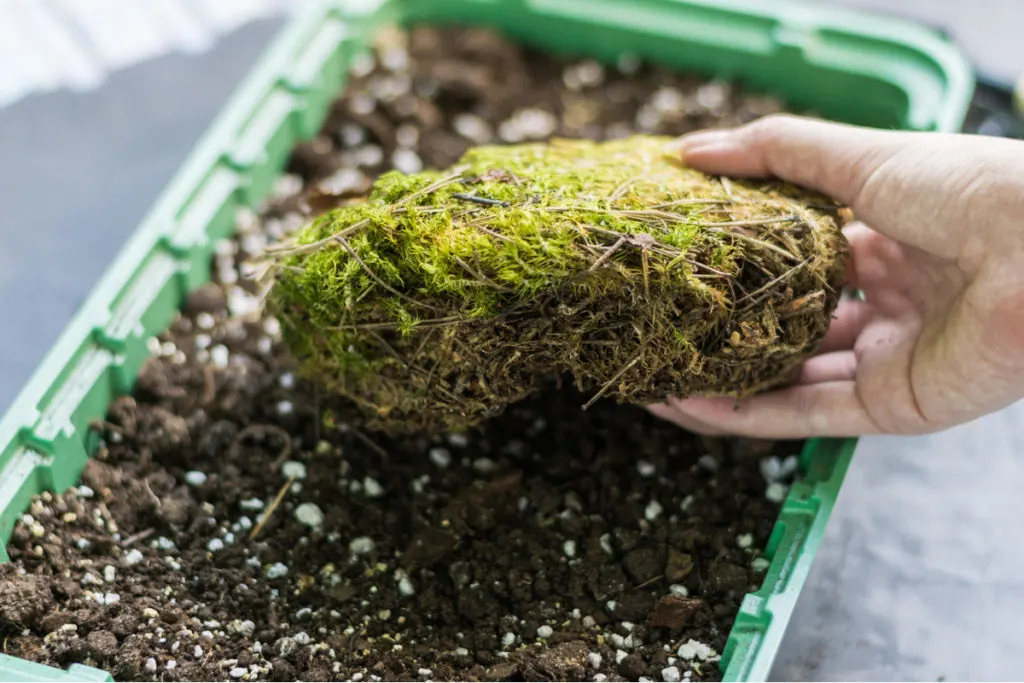
There’s numerous ways to put your sphagnum moss harvests to good use in the indoor and outdoor garden.
Dried sphagnum moss
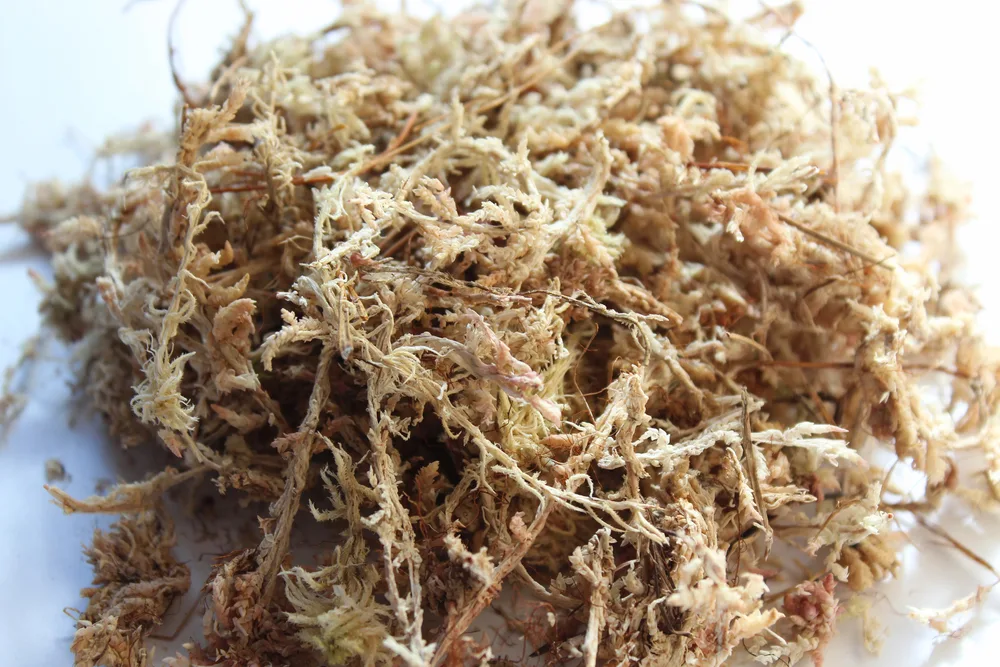
The classic method is to dry out sphagnum moss thoroughly.
Lay out your Sphagnum bits between paper towels and press down to extract as much moisture from them as possible. Repeat with fresh towels until no more water is wicked away.
Set out the cuttings evenly on a flat surface in a well-ventilated area. Allow the moss to dry for several days.
Once completely dried, pop them into a sealed container. You can keep them long-fibered or tear them up into smaller pieces.
Dried sphagnum moss is a perfect substitute for peat. Use it anytime you want to boost drainage and water retention.
1. Homemade potting soil mix
Combine compost, perlite, and sphagnum moss in equal parts to make the very best potting soil.
2. Soilless media
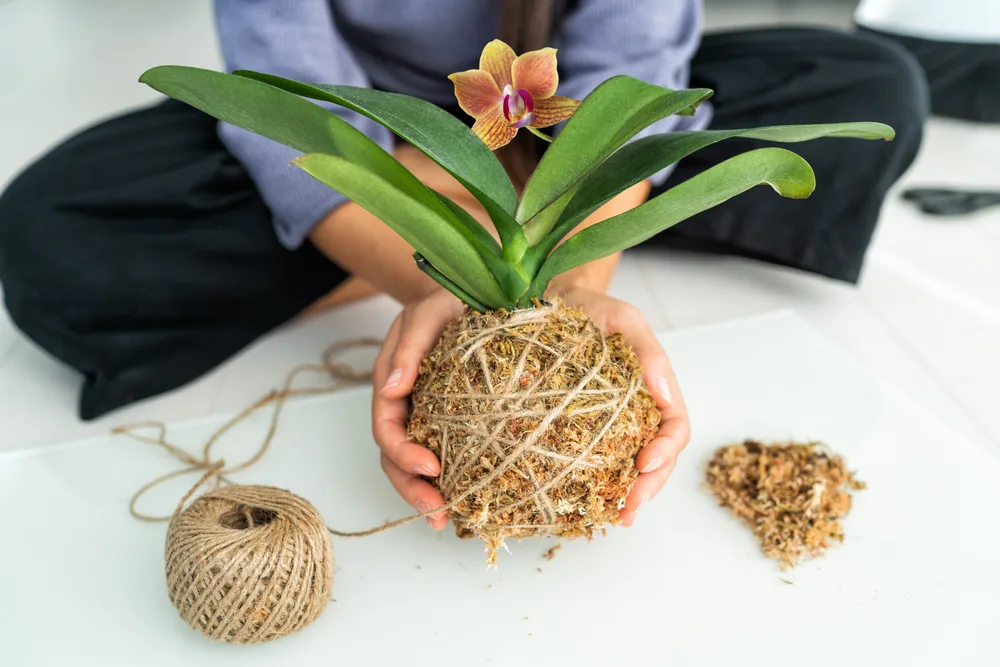
Dried Sphagnum is light and fluffy and makes for an ideal soilless substrate for orchids, bromeliads, succulents, and carnivorous plants.
3. Hanging basket liner
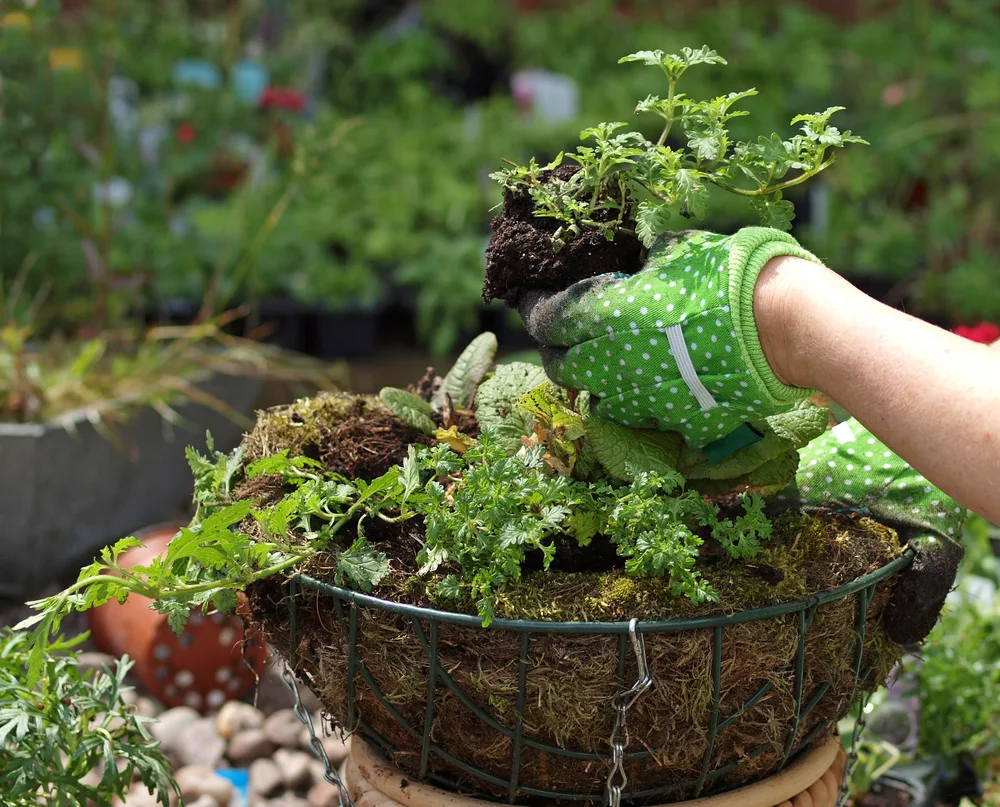
Keep the fibers long and use it as a liner for your wire hanging baskets. Start at the bottom and work your way up the sides until it’s a least two inches thick.
4. Top dressing for container gardens
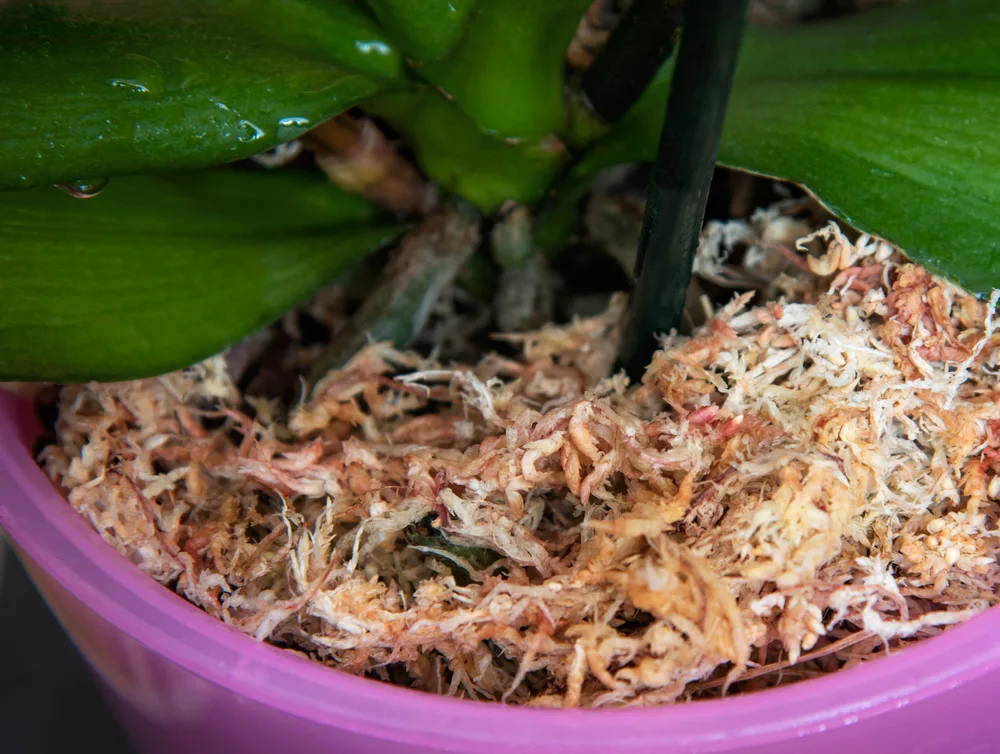
Sphagnum moss looks great as a soil topper for houseplants and other container gardens – and it’ll conserve moisture too.
5. Seed starting
Fill your seed starting pots and seed flats with finely chopped sphagnum moss. Then moisten and sow your seeds.
It’s a fantastic seed starting medium because, along with moisture retention and drainage, it is airy, low in nutrients, and has a neutral pH.
6. Protect flower bulbs
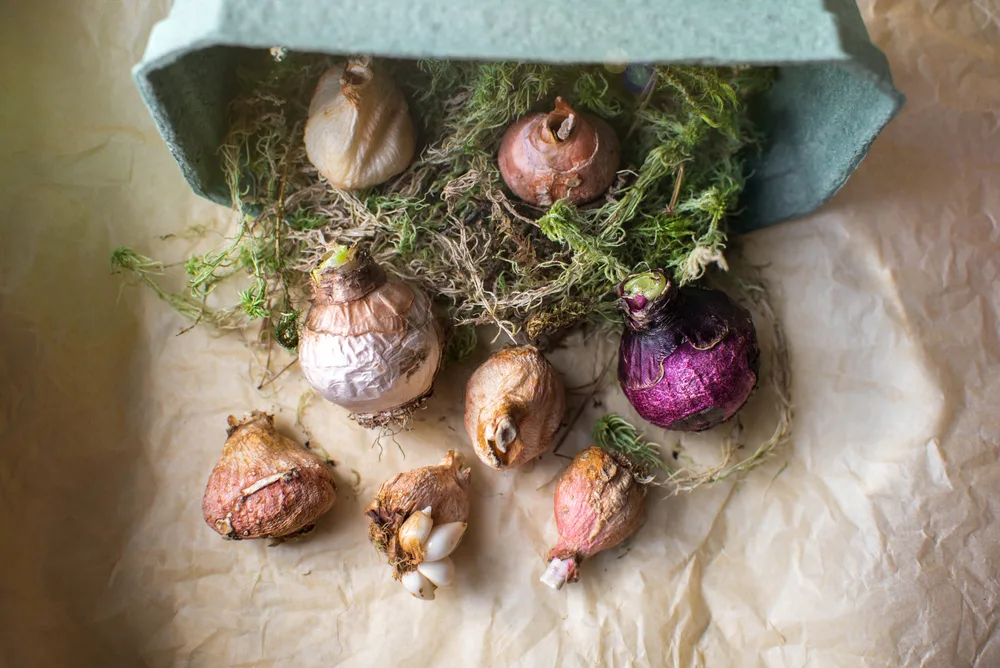
Keep stored flower bulbs dry and prevent rotting by storing alongside dried sphagnum moss. The moss also prevents against damage when moving the bulbs.
Living Sphagnum Moss
7. Living mulch
Another brilliant way to use sphagnum moss is to keep it alive after harvest and apply it as a living mulch for your humidity loving plants.
Orchids, ferns, sundews, pitcher plants, Venus flytraps, and other cultivars with high humidity needs will benefit from a living layer of Sphagnum in the pot.
To get sphagnum moss started as a live top dressing, lay your freshly harvested cuttings over the surface of the soil around the base of the plant and gently tamp them down. Give it plenty of light and keep it moist at all times and the Sphagnum cuttings will eventually fill in and cover the soil.
Another, more exacting, method is to use long tweezers to nestle each moss head, one by one, into the soil around the plant. For best results, place them closely together and make sure their terminal heads are facing up. Although this part can be time consuming, it will look amazing when you’re done.
As the sphagnum moss becomes established, it may need to be pruned back occasionally to prevent it from overtaking the plant. Use these cuttings to top dress other plants, toss them in your propagator, or set them out to dry.

Get the famous Rural Sprout newsletter delivered to your inbox.
Including Sunday musings from our editor, Tracey, as well as “What’s Up Wednesday” our roundup of what’s in season and new article updates and alerts.

